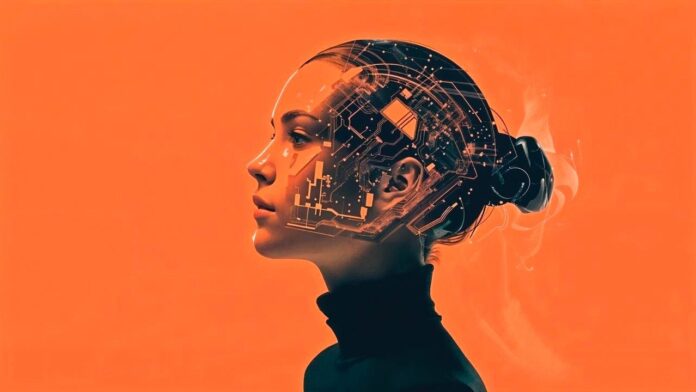Artificial intelligence (AI) is reshaping how people think, learn, and collaborate. As AI becomes increasingly integrated into daily life – from education to work to social interaction – understanding its impact on core cognitive functions like memory, attention, and creativity is crucial. The current trajectory raises concerns about the long-term effects of offloading mental processes to machines. Today’s decisions regarding AI adoption will profoundly impact workplace efficiency, skill development, and overall well-being for future generations.
Cognitive Debt: The Hidden Cost of Automation
AI tools, such as ChatGPT, can create “cognitive debt” – a gradual erosion of mental abilities when machines perform tasks that humans once handled. A 2025 MIT study found that students who used AI to write essays exhibited reduced brain activity and weaker memory recall compared to those who wrote independently. Brain scans revealed diminished engagement in regions responsible for information processing and organization. While AI-assisted writing appears efficient, it can impair attention, memory, and learning over time. Over-reliance on AI may weaken fundamental cognitive functions.
This shift isn’t limited to academia. Professionals in fields like healthcare have noticed that heavy dependence on AI assistants can lead to mental disengagement from critical tasks. This raises fundamental questions for educators, employers, and families about how much mental labor should be delegated to AI versus retained by humans.
The New Learning Curve: Efficiency vs. Mastery
AI-based tutoring and personalized learning platforms offer efficiency, but at a cost. Students who rely solely on AI-driven instruction may skip proven methods like self-practice and collaborative learning, resulting in reduced retention and a diminished understanding of their own learning processes. Instant feedback from AI can hinder deep absorption of information and the development of self-assessment skills.
The same trade-off applies in the workplace. While AI can enhance technical proficiency, it may erode deep thinking, creativity, and problem-solving abilities. The ease and speed of AI can exacerbate these issues. In the past, information retrieval required source comparison and fact-checking. Now, AI tools typically provide a single, authoritative answer, which may not always be accurate. If education fails to prioritize critical analysis and evidence-based reasoning, we risk raising a generation that accepts AI-generated answers uncritically.
AI’s Creativity Paradox: Innovation or Imitation?
AI can support creativity by generating novel ideas and unexpected connections. However, dependence on these tools has a hidden cost. Studies show that students who brainstorm with AI tend to lose flexibility and originality, becoming more adept at refining AI suggestions than generating truly novel solutions. This “creativity paradox” demonstrates that increased reliance on AI can lead to creative fixation and reduced confidence in proposing original ideas.
The most effective approach involves AI as a facilitator, not a replacement. Educators who integrate AI into ideation sessions while maintaining human involvement report greater innovation. Classrooms are most effective when AI supports, rather than replaces, the creative process.
The Social and Emotional Toll of AI
AI is changing not only how we think but also how we develop socially and emotionally. Many young people now grow up in environments where machines mediate much of their cognitive and emotional input. AI cannot interpret nonverbal cues or foster genuine empathy, which has significant implications for its applications. Authentic human interaction, rather than digital exchanges, is crucial for fostering social learning, empathy, and a sense of community.
However, a hybrid approach offers hope. School programs that leverage AI for scaling access to mental health resources, while anchoring support in trusted mentors or peer groups, have shown measurable reductions in stigma and improved outcomes. Authentic belonging and strong identity formation remain rooted in real relationships, not automated feedback.
Equity and Access: The Digital Divide
AI can exacerbate social inequalities due to bias in its data. Black students and non-native English speakers are more likely to be unfairly disciplined or have their work misjudged by AI tools. As technology spreads, students without high-speed internet or access to AI, especially in rural Black communities, risk falling even further behind in digital skills and future opportunities.
Solving these problems requires more than better technology. Experts say we need to make AI easier to understand, teach kids about AI early on, and design AI systems fairly. It’s equally important for students to learn how AI works and where it can go wrong as it is to learn reading or math. Keeping people involved in using AI, ensuring that teams building it are diverse, and encouraging group learning with AI can all help prevent bias and protect our mental growth.
Navigating the Cognitive Revolution
AI is rapidly reshaping how we think, learn, and connect. Leaders in education, healthcare, and business must act now to strike a balance between the benefits of AI and the need to protect essential human strengths, including memory, creativity, critical thinking, and emotional connection. This requires ongoing, evidence-based research to ensure AI is used responsibly and supports mental health and future potential. The choices we make today will shape the knowledge, character, and opportunities of future generations




















